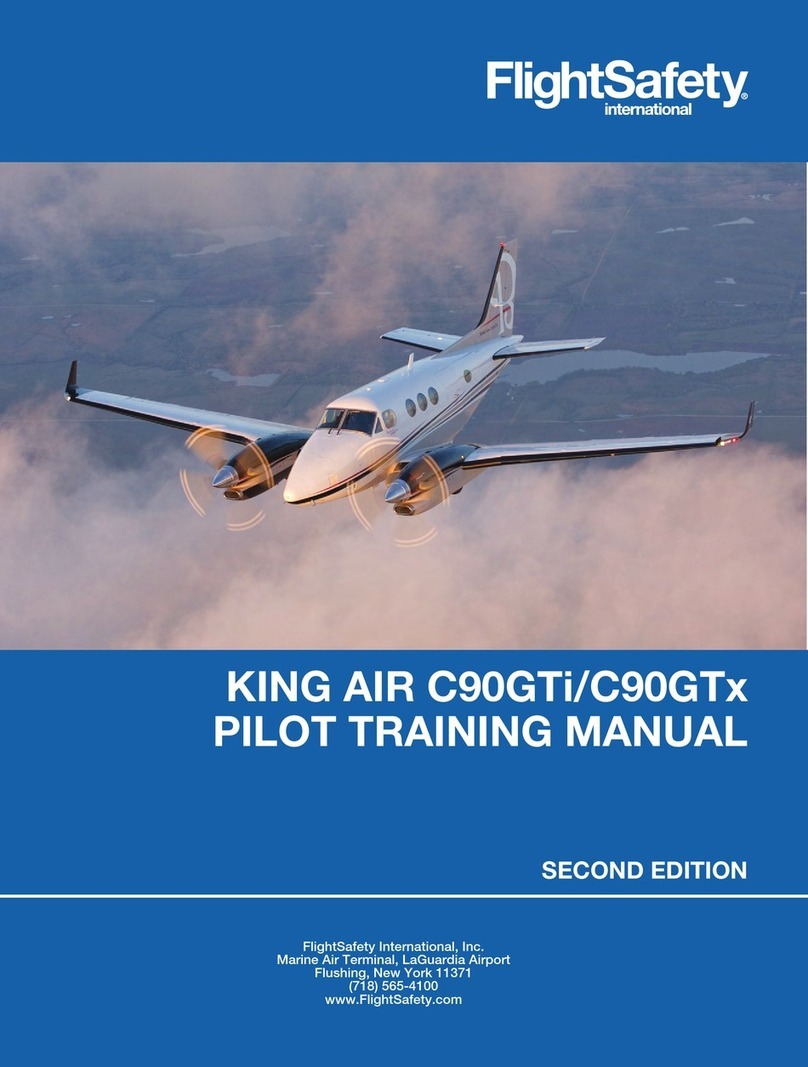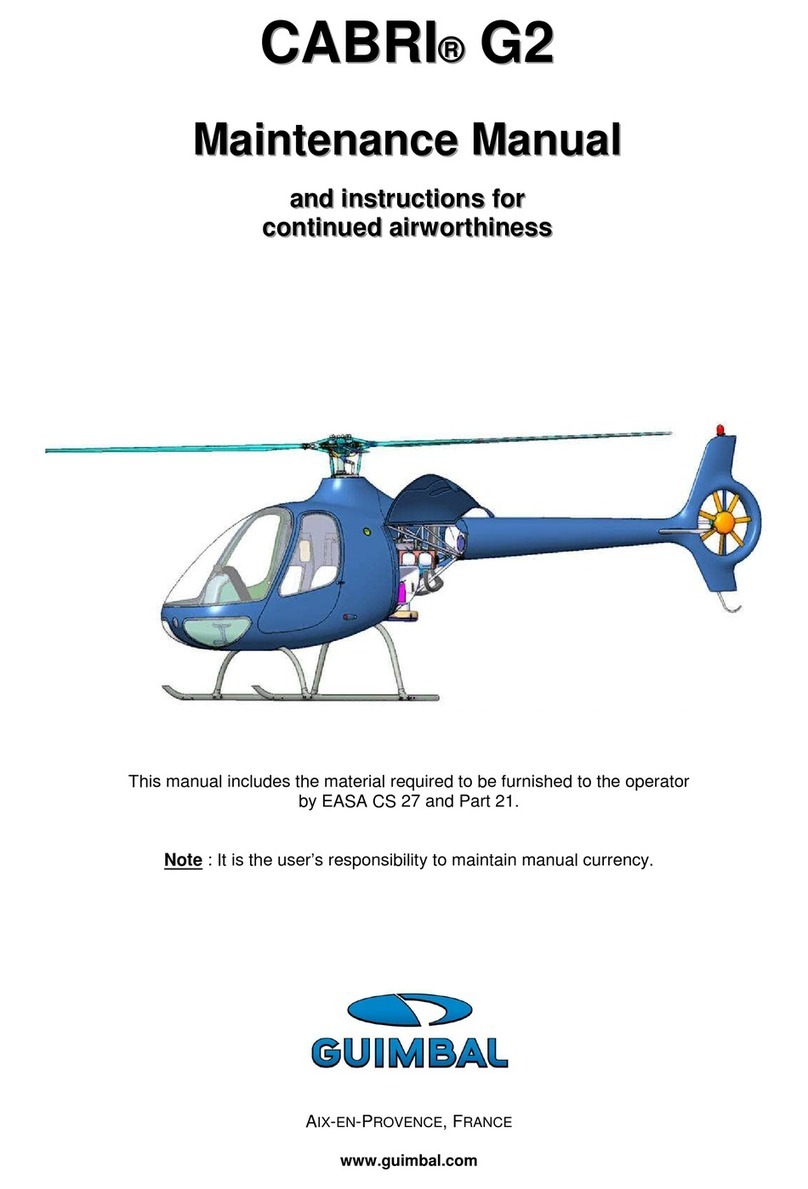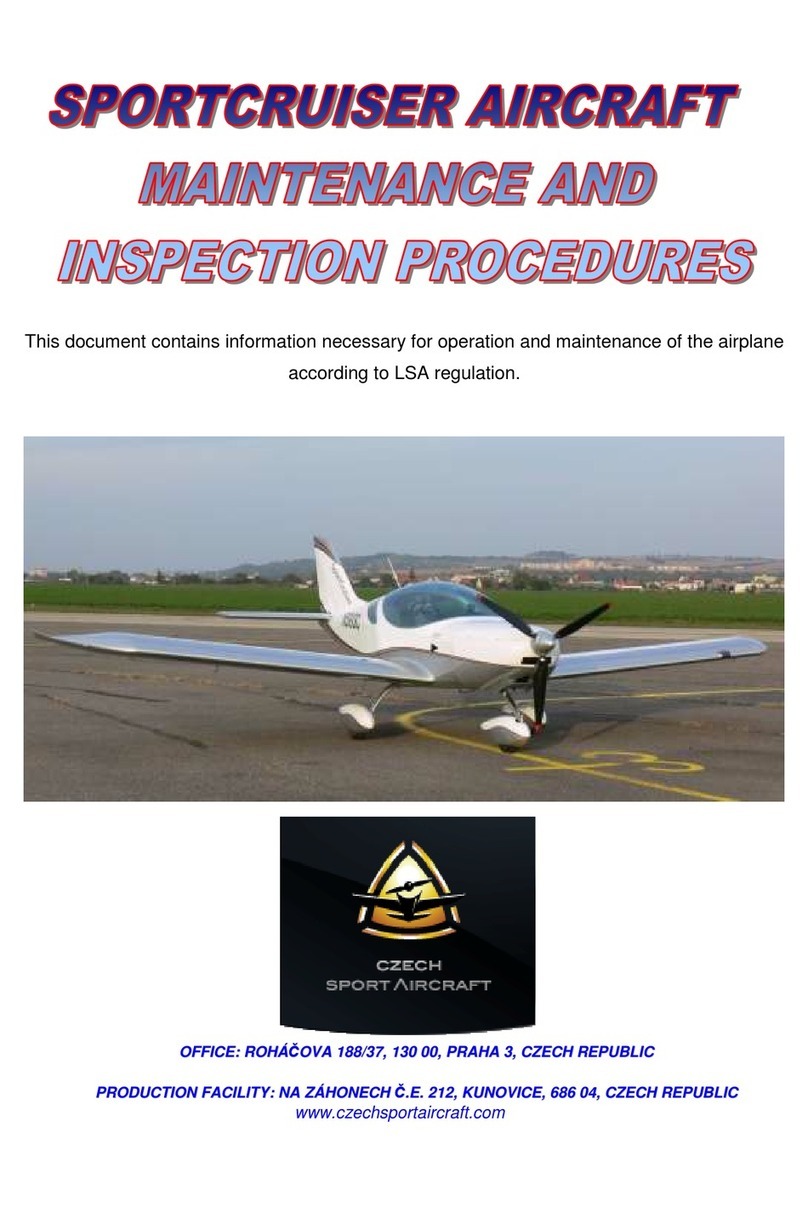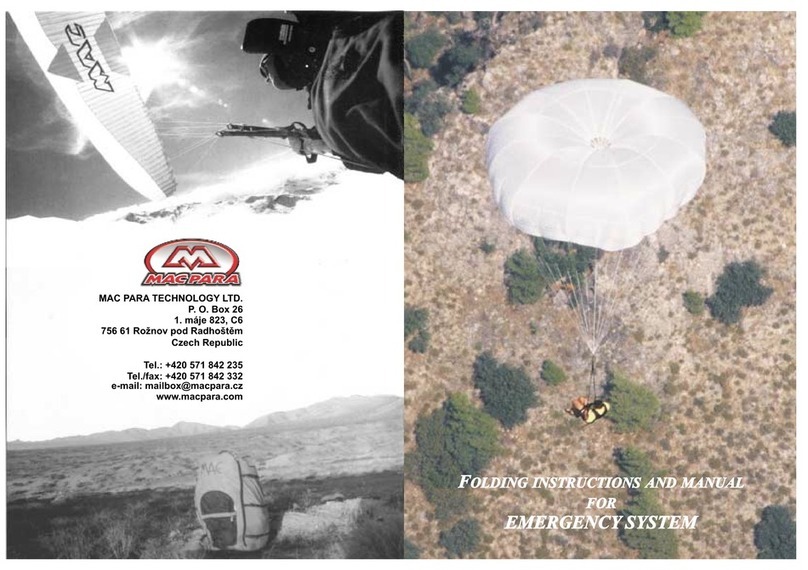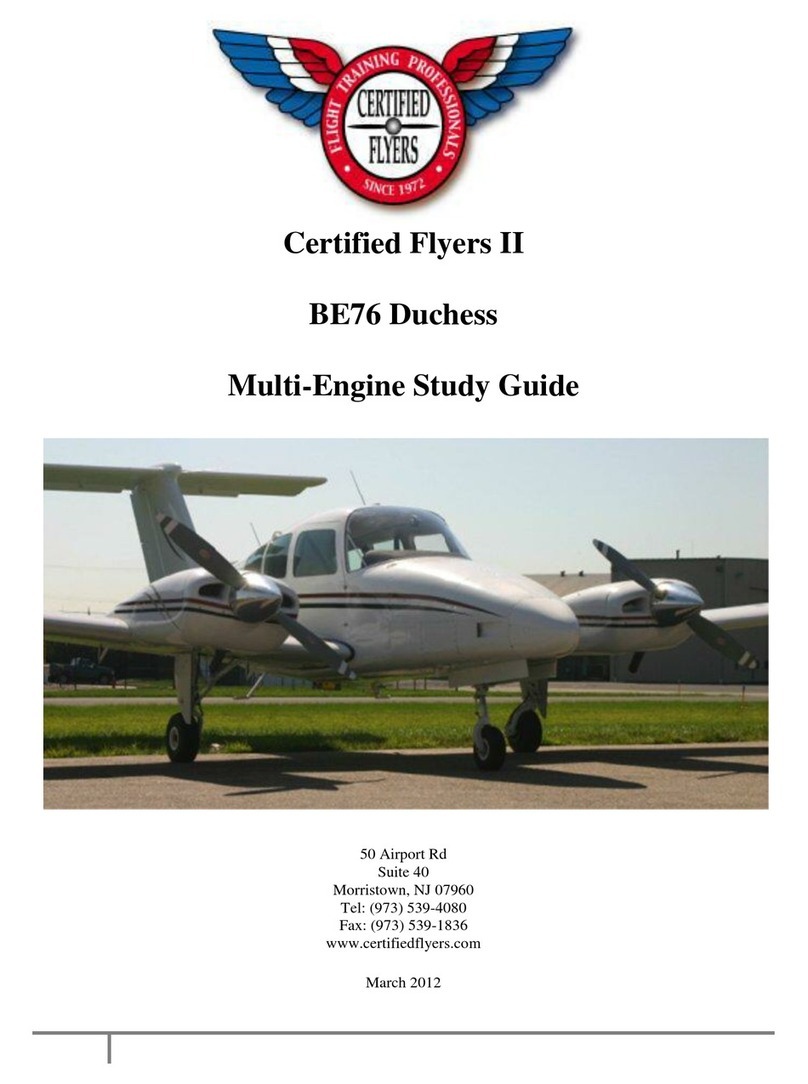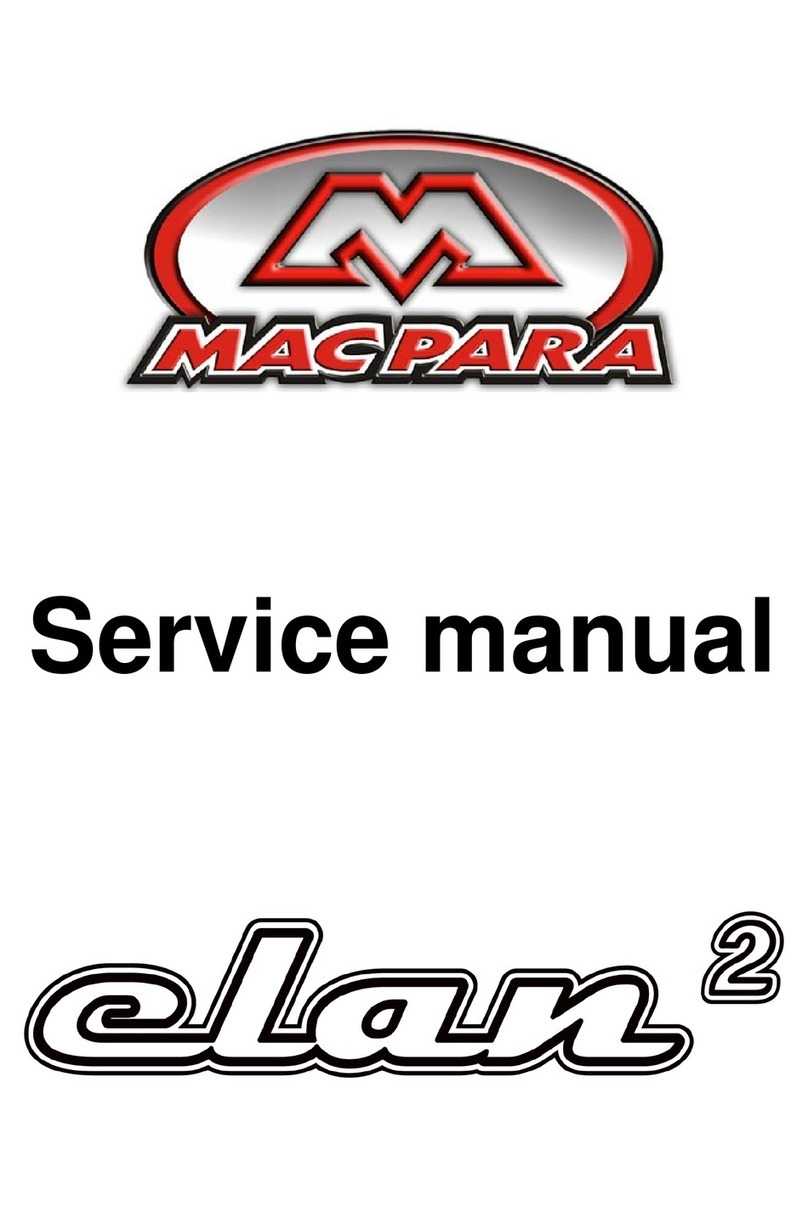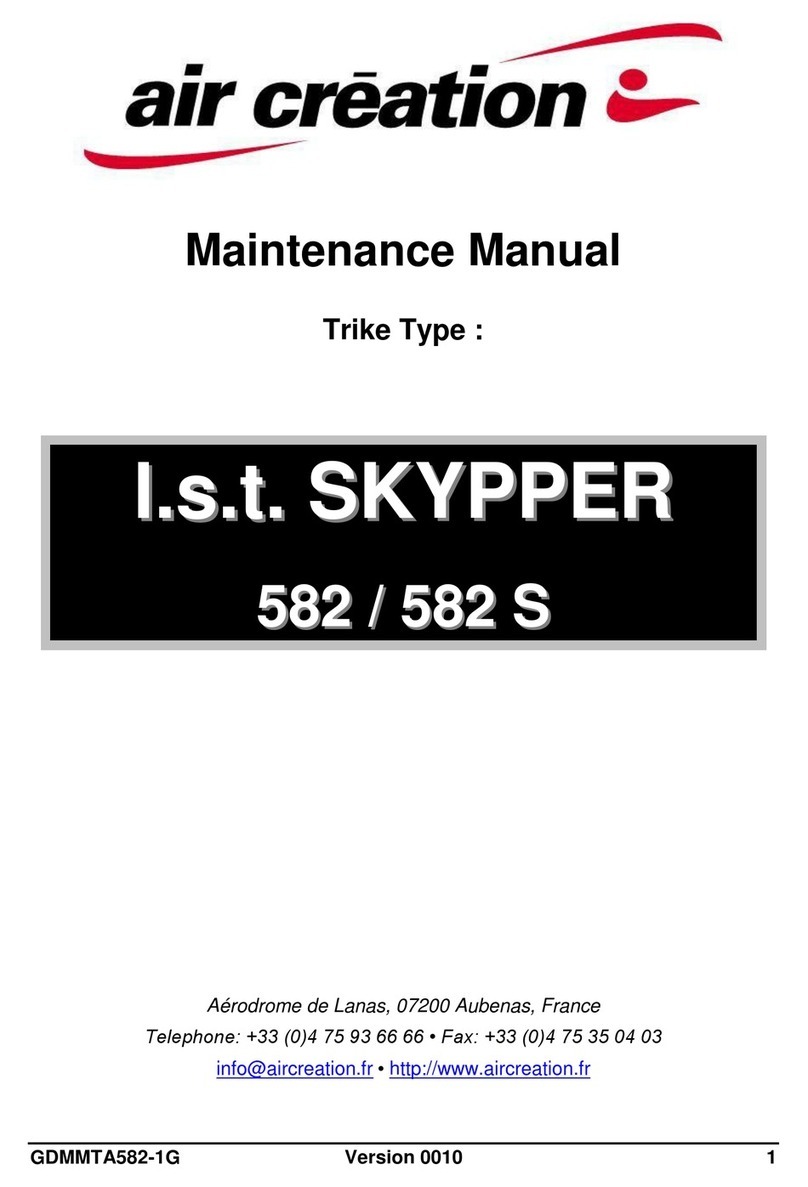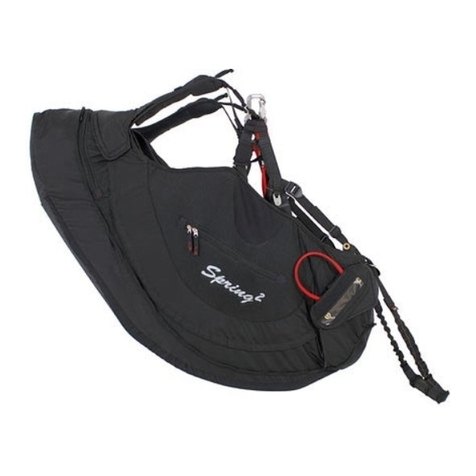Flying Machines FM250 VAMPIRE Technical specifications

www.flyingmachines.cz FLYING MACHINES s.r.o. [email protected]
FM-250 Vampire
Flight Manual
Flight Manual Page 0 of 40

www.flyingmachines.cz FLYING MACHINES s.r.o. [email protected]
TABLE OF CONTENTS
SECTION
1. General
2. Limitations
3. Normal Procedures
4. Emergency Procedures
5. Performance
6. Airplane Handling, Service & Maintenance Information
7. Service life of an airplane and maintenance cycles
8. Repairs
9. Rotax 912 / 912S engine maintenance
PAGE
6
12
18
24
28
29
32
37
39
1. General
1.1 Introduction
1.2 Description
1.2.1 Airframe
1.2.2. Fuel system
1.2.3 Engine
1.2.4 Propeller
1.2.5 Landing gear
1.2.6 Controls
1.2.6.1 Movement of flight controls
1.2.7 Equipment
1.2.8 Technical drawing
1.2.9. Detecting the position of the center of gravity, permitted limits
1.2.9.1 Weighing the airplane for the headmost position of the center of gravity
1.2.9.2 Weighing the airplane for the backmost position of the center of gravity
2. Limitations
2.1 Introduction
2.2 Airspeed indicator markings
2.3 Operating speeds
2.4 Weight and load factors
2.4.1 Maximum and minimum weights
2.4.2 Load factors, flight envelope
2.5 Engine operating limitations
2.6 Fuel and lubricant oil
2.6.1 Fuel supply
2.6.2 Consumption of fuel
Flight Manual Page 1 of 40

www.flyingmachines.cz FLYING MACHINES s.r.o. [email protected]
2.7 Crew
2.7.1 Minimum and maximum weight of the crew
2.7.2 Pilot’s qualification
2.7.3 Pilot’s place in the plane, age of the crew, using the seat belts
2.8 Maximum flight altitude
2.9 Meteorological restrictions
2.10 Carriage of goods restrictions
2.11 Type of traffic
2.12 Restriction of maneuvers
2.12.1 Allowed turns
2.13 Other restrictions
3. Normal Procedures
3.1 Introduction
3.2 Preflight inspection
3.3 Checklists and stages of flight
3.3.1 Before starting the engine
3.3.1.1 Engine run up
3.3.2 Before take off
3.3.3 After take off
3.3.4 Climb
3.3.5 Cruise
3.3.6 Descent
3.3.7 Downwind
3.3.8 Base
3.3.9 Final
3.3.10 Landing
3.3.11 Shut down
3.4 After flight inspection
3.5 Flying with a crosswind component
3.6 Flight in turbulent air
4. Emergency Procedures
4.1 Introduction
4.2 Engine failure
4.2.1 Engine failure during take off
4.2.2 Engine failure after take off
4.2.3 Engine failure during flight
4.2.3 Airstart
4.3 Fire, fume and smoke
4.3.1 Engine fire on the ground
4.3.2 Engine fire during take off
4.3.3 Engine fire in flight
4.3.4 Cabin fire
4.4 Vibrations
4.5 Precautionary landing
4.6 Landing gear and tire failure
4.6.1 Main landing gear failure
4.6.2 Nose landing gear failure
4.6.3 Tire failure
4.7 Using the ballistic recovery system – BRS (parachute)
Flight Manual Page 2 of 40

www.flyingmachines.cz FLYING MACHINES s.r.o. [email protected]
5. Performance
5.1 Introduction
5.2 Speed
5.3 Rate of climb and loss of height during stall
5.4 Take off and landing distance
5.5 Flying range
5.6 Gliding ratio
5.7 Cruise
5.8 Fuel consumption
6. Airplane Handling, Service & Maintenance Information
6.1 Anchoring an airplane
6.2 Manipulation with an airplane
6.3 Rigging and de-rigging
6.3.1 De-rigging
6.3.2 Rigging
6.4 Washing and cleaning of an airplane
6.5 Filling the fuel
6.6 Placards and their locations
6.7 Stepping up on an airplane
7. Service life of an airplane and maintenance cycles
7.1 Service life of an airplane
7.2 Maintenance
7.2.1 Lubrication
7.2.2 Disassembly of the nose wheel
7.2.3 Disassembly of the main wheel
7.2.4 Tire repairs
7.2.5 Electrical installation
7.2.5.1 Electrical installation inspection
7.2.6 Spark plugs
7.2.7 Special tools
7.2.8 Minor repairs
7.2.9 Changing the fuel filter in the engine area
7.2.10 Propeller maintenance
7.2.11 Jacking points on an airplane
7.3 Introductory inspection
7.4 Periodic inspection after every 50 hours
7.5 Periodic inspection after every 100 hours
7.6 Periodic inspection after every 200 hours
7.7 Periodic inspection after every 300 hours
7.8 Placards and their locations
8. Repairs
8.1 Replacement of screws
8.2 Repairs of rivet joints
8.3 Controls repairs
8.4 Airframe repairs
8.5 Fuel system repairs
8.6 Engine repairs
8.7 Electrical system and electrical appliances repairs
Flight Manual Page 3 of 40

www.flyingmachines.cz FLYING MACHINES s.r.o. [email protected]
9. Rotax 912 / 912S engine maintenance
9.1. Oil change
9.2 Spark plugs
9.3 Fuel
9.4 Liquid coolant
9.5 Service life and engine inspections
9.6 Service life of rubber parts of engine
Flight Manual Page 4 of 40

www.flyingmachines.cz FLYING MACHINES s.r.o. [email protected]
This manual uses the following expressions to emphasize particular information:
WARNING
ATTENTION
NOTE
Indicates an obstruction which, if not followed, may
cause serious injury or even death.
Indicates an obstruction which, if not followed, may
cause severe damage to an airplane or its
components.
Indicates additional information which may be
required
1. General
1.1 Introduction
This flight manual describes performance and flight characteristics of FM-250 Vampire and
contains necessary information and instructions for pilots.
Every pilot of FM-250 Vampire must read this flight manual thoroughly before the first flight
as a pilot in command.
It will not teach you to fly or build the airplane but it provides important information to fly the
airplane safely. It must remain in the aircraft during all flights.
OPERATIONS AUTHORIZED
FM-250 Vampire is certified as an ultralight aircraft and is equipped for day VFR operations.
The airplane must be operated in accordance with all rules valid for UL aircraft. If there is
any information in this document, which contradicts such rules, it is to be disregarded.
MANEUVERS - ULL CATEGORY
FM-250 Vampire is certified in the UL (Ultralight) category. The UL category is applicable to
ultralight airplanes intended for non-aerobatic operations. These include any maneuvers
incidental to normal flying and turns in which the angle of bank is not more than 60° and pitch
attitude nose up or down not more than 30° from horizontal.
NOTE
Operation of this airplane is at your own risk.
Flight Manual Page 5 of 40

www.flyingmachines.cz FLYING MACHINES s.r.o. [email protected]
1.2 Description
1.2.1 Airframe
FM-250 Vampire is an all composite ultralight low wing airplane with two seats.
The fuselage has sandwich composite construction, with oval cross section shaped to
achieve the propitious proportion considering rigidity, weight and aerodynamic drag.
The landing gear consists of two main wheels and a nose wheel. The main wheels are
equipped with hydraulic disk brakes. The nose wheel is steerable.
The brakes are hand-operated from both seats using a lever on the center console. The lever
can be locked in the full back position; therefore it can be used as a parking brake.
The wheels can be equipped with fairings.
The cockpit is arranged with side by side seating. It is covered with large, clear or tinted
forward-hinged canopy, which provides an exceptional view. The canopy is held open using
a gas strut and it has two locks on both sides of the canopy. The cockpit is equipped with
ventilation and heating.
FM-250 Vampire has full dual controls consisting of two control sticks, rudder pedals, trim-
tab lever, throttle, landing flaps and brake levers.
The wing has cantilever all composite construction with one main and one rear auxiliary spar,
which holds ailerons and split landing flaps. The main spars of both wings are joined by two
bolts and rear auxiliary spars are connected to the fuselage by two screws, all fitted in
bearings.
The entire empennage is also all composite construction. The right elevator contains trim-tab.
1.2.2. Fuel system
The fuel system consists of an integrated composite fuel tank in the right wing with fuel level
sender, fuel lines, fuel valve, filter, fuel screen in the tank, drain valve and mechanical fuel
pump. This applies for the engines Rotax 912 and 912S series.
Fuel tank is equipped with a fuel cap located on the top of the right wing.
1.2.3 Engine
Aircraft is powered by Rotax 912 UL or 912 ULS engine, which ensures the airplane’s
excellent dynamic and flying characteristics. Engines Rotax 912 UL and 912 ULS are four-
stroke four-cylinder opposed type engines with liquid-cooled cylinder heads and air-cooled
cylinders.
The engine has an integrated reduction gear and two carburetors. More information about
the engine is enclosed in the engine manual.
WARNING
None of the above mentioned engines are certified for aviation use. Even though a
maximum attention is paid during their production, engine failure can occur at any
time. Pilot of the airplane is solely responsible for the consequences.
The obligation of the pilot is to be able to glide and land safely to preselected area in
the case of engine failure.
1.2.4 Propeller
It is possible to use non-adjustable, ground adjustable, in flight adjustable or constant speed
propellers. The description of the propeller is provided with your airplane and is included in
the instructions for assembly and maintenance of the propeller.
Flight Manual Page 6 of 40

www.flyingmachines.cz FLYING MACHINES s.r.o. [email protected]
1.2.5 Landing gear
Landing gear consists of two main composite legs and a welded front leg. The tricycle gear
configuration, steerable nose wheel and hydraulic brakes all combine make the aircraft easy
to handle on the ground.
1.2.6 Controls
Controls are made of AlCu4PbMg and AlCuMg1 aluminum alloys. All controls are fitted in
bearings.
1.2.6.1 Movement of flight controls
Pitch control is effected by fore-aft movement of the control stick. Its movement is transmitted
to elevator using rods.
Pitch trimming is effected by lever installed between the seats right to the throttle. Its
movement is transmitted to trim-tab using cables.
Roll control is effected by sideward movement of the control stick. Its movement is
transmitted to ailerons using rods.
Yaw control is effected by rudder pedals. Their movement is transmited to the rudder using
cables.
Braking is effected by foot operated brakes located on the rudder pedals.
Landings flaps are actuated by a lever installed between the seats behind the throttle and
pitch trim. The most forward position of the lever corresponds to the flaps up position, the
most rearward position of the lever corresponds to the flaps full down position.
Throttle lever is located between the seats left to the pitch trim. The most forward position of
the lever corresponds to full power of the engine, the most rearward position of the lever
corresponds to idle setting of the engine.
1.2.7 Equipment
FM-250 Vampire can be equipped with a wide variety of the instruments ranging from basic
instruments for monitoring flight and engine parameters to the "glass cockpit” incorporating
the latest EFIS’s and MFD’s. The instruments in this airplane contain:
EFIS DYNON D-10A
Digital Engine Monitoring System
fuel level indicator
transceiver Becker
Flight Manual Page 7 of 40

www.flyingmachines.cz FLYING MACHINES s.r.o. [email protected]
1.2.8 Technical drawing
Flight Manual Page 8 of 40

www.flyingmachines.cz FLYING MACHINES s.r.o. [email protected]
Basic dimensions of FM-250 Vampire
length
height
span
wing area
fuel capacity
tire pressure
6,26 m
2.16 m
7.8 m
10.05 m2
68 l
1.8 kPa
1.2.9 Detecting the position of the center of gravity, permitted limits
Keeping the center of gravity in its limits is a must for the stability and manageability of the
airplane. That’s why it is necessary for every airplane operator/user to know how to diagnose
the center gravity position of the airplane for actual occupancy. Flying outside of the
permitted CG limits at either extreme is potentionally dangerous and should not be attempted
in any circumstance.
When calculating the center of gravity it is necessary to know the length of the central
aerodynamic chord. Calculated center of gravity must be inside the range given by the
producer.
Mean aerodynamic chord (MAC) of the wing 1312 mm
Allowed range of the center of gravity in % MAC 22 - 32 %
The actual CG must always be within permitted limits.
When detecting the center of gravity and making subsequent calculations, let the airplane
stand in flying position at three weighing-machines and proceed following these instructions:
1.2.9.1 Weighing the airplane for the headmost position of the center of gravity
- pilot’s seat is occupied with a pilot with the lowest allowed weight
- there can not be any load in the plane, the fuel tank must be empty
- at the scales read the weight Gm under the main wheels; it is the total weight under both
main wheels Gml+Gmr
- at the scales read the weight Gn under the nose wheel
- total weight of the airplane Gtotal is equal to the sum of Gm+Gn
- measure the distance from the axle of the main undercarriage to the axle of the front wheel
Lb in millimeters
- measure the distance from the leading edge of the wing (using plummet) to the axle of the
main undercarriage La in millimeters
- calculate the distance of the center of gravity from the axle of main undercarriage Lt by the
formula: Lt = Gn x Lb / Gtotal
- calculate the distance of the center of gravity from the leading edge of the wing Xt by the
formula: Xt = La - Lt
-calculate the headmost position of the center of gravity in percents by the formula
X% = Xt x 100 / MAC
1.2.9.2 Weighing the airplane for the backmost position of the center of gravity
Both seats must be occupied with maximum weight of the crew, fuel tank must be full and the
useful load must be of maximum allowed value
The procedure of measuring and weighing is the same as detecting the headmost position of
the center of gravity.
Flight Manual Page 9 of 40

www.flyingmachines.cz FLYING MACHINES s.r.o. [email protected]
Gn =
Gml =
Gmr =
Gtotal =
La =
Lb =
kg
kg
kg
kg
706 mm
1518 mm
Center of Gravity
Lt = Gn x Lb / Gtotal
Xt = La - Lt
X% = Xt x 100 / MAC
Lt = ..... x 1518 / ..... = ....
Xt = 706 – .... = ....
X% = .... x 100 / 1312 = ....%
Flight Manual Page 10 of 40

www.flyingmachines.cz FLYING MACHINES s.r.o. [email protected]
2. Limitations
2.1 Introduction
This chapter contains operational limitations and parameters of the airplane and engine.
2.2 Airspeed indicator markings
The airspeed indicator is color coded to emphasize important airspeed limitations.
Green Arc: Normal Operating Range 78km/h – 240 km/h
The green arc shows the normal operating range of the airplane. The speed at the bottom of
the green arc, abbreviated Vs, is the stall speed with the flaps and landing gear retracted,
power at idle, and the airplane at maximum gross weight. The top of the green arc shows the
high end of the normal operating range, the maximum structural cruising speed, abbreviated
Vno.
Yellow Arc: Caution Range 240 km/h – 270 km/h
The yellow arc represents the caution range—speeds appropriate only in smooth air. The top
of the yellow arc coincides with Vne, the never-exceed speed of the airplane.
White Arc: Flap Operating Range 65 km/h – 120 km/h
The white arc shows the range of speeds in which it's safe to extend full flaps. The upper limit
of the white arc is called Vfe, maximum flap extended speed. Extending the flaps at higher
speeds could cause their structural damage. The lower limit of the white arc, abbreviated
Vso, is the stalling speed or minimum steady flight speed at maximum gross weight with the
flaps and landing gear in the landing position.
Red Line: Never-Exceed Speed 270 km/h
A red line near the top of the airspeed range marks Vne. Exceeding this speed even in
smooth air could damage the airplane structure.
Flight Manual Page 11 of 40

www.flyingmachines.cz FLYING MACHINES s.r.o. [email protected]
2.3 Operating speeds
Airspeed
km/h
IAS * Warning
Vne
Vno
Vb
Va
Vfe
Vs
Vso
Never exceed speed
Maximum cruising speed
Maximum speed in
turbulence
Maximum maneuvering
speed
Maximum flap extended
speed
Stall speed / clean
Stall speed / landing
configuration
270
240
216
156
120
78
65
Do not exceed this speed in any
circumstance!
This speed can be exceeded only in smooth
air, use max. 1/3 of full deflections of the
controls.
Maximum speed for the flights in turbulence
and wind gusts
Do not use full deflections of flight controls,
the airplane could be overstressed.
Do not exceed this speed with the flaps
extended
Minimum speed with the flaps retracted
Minimum speed with the flaps full extended
* Indicated Air Speed
2.4 Weight and load factors
2.4.1 Maximum and minimum weights
Maximum take off weight
Maximum landing weight
Maximum weight of the fuel
Maximum load of one seat
Maximum weight of load behind the seats
Minimum weight of the crew
450 kg
450 kg
49 kg
100 kg
8 kg
70 kg
2.4.2 Load factors, flight envelope
Load factors express the load of the airplane while operating with inertial and aerodynamic
forces in respect to its total allowed maximum weight. Airplane FM-250 Vampire is certified
for maximum take off weight 450 kg. The regulation UL 2 also demands the following load
factors.
N1 +4.0
N2 +4.0
N3 -1.5
N4 -2.0
N1, N2, N3, N4 ............. load factors by the diagram V-a (flight envelope)
Flight Manual Page 12 of 40

www.flyingmachines.cz FLYING MACHINES s.r.o. [email protected]
Flight envelope
-3
-2
-1
0
1
2
3
4
5
0 50 100 150 200 250 300 350
v [km/h]
n [1]
Flight envelope of the aircraft FM-250 Vampire
2.5 Engine operating limitations
WARNING
Engines Rotax 912 UL and 912 ULS are not certified for aviation use and sudden
failure can occur at any time. That can lead to an emergency landing. Do not attempt
to fly when safe landing in the case of engine failure is not possible. There is no life
service or safety certificate issued to these engines. These engines are for use in
experimental and ultralight uncertified aircraft only and only in circumstances in which
an engine failure will not compromise safety.
WARNING
All risks and the responsibility concerning using and operating these engines are on
the side of the user. We inform you - as the user, that there is a possibility of sudden
engine failure.
Minimum outside temperature for take off
Maximum outside temperature for take off
Take off RPM (5 minutes max.)
Maximum continuous RPM
Idle speed
-25˚C
+50˚C
5.800 RPM
5.500 RPM
1.400 RPM
This data can slightly differ during actual operation of the engine, for details look in the
engine operator’s manual.
The installed engine must be operated in accordance with all instructions of its manufacturer.
If there is any information in this document, which contradicts the manufacturer’s instructions,
it is to be disregarded.
Flight Manual Page 13 of 40

www.flyingmachines.cz FLYING MACHINES s.r.o. [email protected]
2.6 Fuel and lubricant oil
Rotax 912 UL and 912 ULS engines use many approved fuel types. Details are enclosed in
the engine maintenance manual. In our conditions we recommend using the Natural 95
gasoline. Peruse the demands for the fuel prescribed by the producer in detail. If the situation
demands it’s good to know what other fuel types are possible to use.
There are also conditions prescribed by the producer for the oil used in the engine. These
conditions are also enclosed in the engine maintenance manual. In our conditions we
recommend the oil Castrol GTX 3. There are types of oil which can shorten the oil and oil
filter change period from 100 to 50 flight hours. These details are included in the engine
maintenance manual.
2.6.1 Fuel supply
Volume of tank
Unusable amount of fuel
Minimum amount of fuel for take off
68 liters
3 liters
8 liters
Unusable amount of fuel is such amount of fuel in the tank at which the first symptoms of the
lack of the fuel can occur at normal conditions.
2.6.2 Consumption of fuel
The consumption of fuel depends on the type of used propeller, engine, flying technique, total
weight of the airplane, flight altitude, flight regime and the consumption is also influenced by
the meteorological conditions (consumption increases with higher temperatures). In general,
flight with heavier airplane requires higher engine output.
Aerodynamic drag increases with the speed of the flight and that’s why the consumption of
the fuel increases with higher speed. The consumption - output curve of the engine is
enclosed in the engine maintenance manual. Used propeller influences the consumption as
well. Adjustable propeller can be a compromise among various flight regimes. By using an
adjustable propeller consumption can decrease by 10-15%.
By using the fuel computer, which shows immediate consumption of the fuel, you can
optimize flight regime and achieve another reduction in the consumption.
2.7 Crew
2.7.1 Minimum and maximum weight of the crew
FM-250 Vampire has two seats and there are three restrictions considering the weight limits.
First is the minimum weight of the crew, which is 70 kg. This minimum weight ensures that
the center of gravity is kept in the limits and so the good controllability and the stability of the
flight are preserved. If this condition is not fulfilled it is necessary to fasten respective amount
of weight to the other seat.
Second restriction is not to exceed the maximum take off weight of the airplane, which is
450kg.
Third restriction is the maximum load of one seat, which is not more than 100 kg.
Flight Manual Page 14 of 40

www.flyingmachines.cz FLYING MACHINES s.r.o. [email protected]
NOTE
Remember- it is usually not a problem to take off with an airplane exceeding the
maximum take off weight but it is the problem of landing such an airplane.
ATTENTION
Maximum weight of 450 kg can not be exceeded in any case
2.7.2 Pilot’s qualification
FM-250 Vampire is aerodynamically controlled airplane. The requirements can change in
time and that’s why it is important to know the valid version of the regulations. The following
applies at the time of publishing this manual:
- pilot in command must have the qualification of at least "pilot of aerodynamically controlled
UL airplanes”
- pilot of an airplane can hold the qualification of student pilot ULLa if an instructor ULLa is on
board
- student pilot ULLa can fly on board alone during his (her) solo flights in training under
supervision of an instructor
- pilot can have another person with no pilot’s qualification on board after logging at least 50
hours on UL airplanes including at least 5 hours on FM-250 Vampire.
2.7.3 Pilot’s place in the plane, age of the crew, using the seat belts
The airplane FM-250 Vampire has full dual controls and all instruments can be seen and
operated from both seats. The pilot of the plane seats in the left seat.
The age of the pilot is not confined in any way and is derived of the requirements concerning
the minimum age of the pilot or student pilot by the regulation UL3. The upper limit of the age
is given by the health capability, so is the holding of a valid pilot license.
The age of another person on board is not determined by any LAA regulation, but regarding
the minimum age we can generally recommend that the second person of the crew should be
at least the size to be able to use the seat belts.
On basis of this general requirement with reference to the regulation UL1, section 3,
paragraph 3.3., it is necessary for the pilot to decide if he (she) will accept another person on
board, taking in account his (her) age, physical and mental ability.
As producers we can not give any recommendation or restriction. We emphasize the crew to
use the seat belts which must be correctly fastened.
2.8 Maximum flight altitude
Technically speaking, aircraft's service ceiling is the density altitude at which its maximum
rate of climb is no greater than 0.5 m/s. Its absolute ceiling is the highest altitude at which it
can maintain level flight. In real situation, this technical ability depends on actual weight of
the airplane, conditions of engine, propeller output, meteorological conditions, etc.
Concerning the legislative, the flight altitude is influenced by many restrictions which can
change in course of time. Make sure you get to know these restrictions completely.
Flight Manual Page 15 of 40

www.flyingmachines.cz FLYING MACHINES s.r.o. [email protected]
2.9 Meteorological restrictions
Operating the airplane is restricted by meteorological conditions and a pilot of an airplane
must observe the meteorological minimums and the rules of flights. Technical and flying
attributes need to be considered as well. There are following restrictions in effect:
Maximum outside temperature
Minimum outside temperature
Maximum wind components for take off and landing
Maximum headwind component
Maximum crosswind component
Maximum tailwind component
+50 degrees Celsius
-25 degrees Celsius
6m/s
3m/s
1m/s
Operating an airplane at low temperatures is restricted mostly by the possibility of ice
formation. Do not attempt to fly during conditions that increase the probability of ice
formation.
2.10 Carriage of goods restrictions
Transport of load is restricted by the valid regulations and by the technical abilities of an
airplane. Valid regulations prohibit the transport of some kinds of load, for example weapons,
explosives, volatile and caustic agents, etc.
Regarding technical ability of an airplane, a pilot can transport the goods in the cockpit only
by maintaining the following:
- maximum weight of the airplane can not be exceeded
- the load can be transported only if it does not interfere with the controls, if it does not
obstruct the movement and the view of the pilot in any way and lastly the load must be fasten
to the seat
- small sized objects can be stored in the side pockets of padding
- objects in the baggage compartment can be transported only while keeping the center of
gravity in its limits. At the same time, the load must be secured so it will not obstruct the
pilot’s view and controllability of an airplane during all flying conditions (for example flying into
turbulent air).
2.11 Type of traffic
Flying rules and the equipment of the airplane determine the operation of the airplane only
for flights under the VFR conditions in the daylight.
FM-250 Vampire must be flown in VMC conditions with sight of the surface. Other flights are
strictly prohibited. Do not fly into icing conditions. Aerial work is prohibited.
Flight Manual Page 16 of 40

www.flyingmachines.cz FLYING MACHINES s.r.o. [email protected]
2.12 Restriction of maneuvers
Regulations for UL airplanes allow only non-aerobatic operations.There are also technical
restrictions of the airplane.
Non-aerobatic operations include all turns during normal flying and turns in which the angle
of bank is not more than 60° and pitch attitude nose up or down not more than 30° from
horizontal.
ATTENTION
We highly stress that the airplane FM-250 with its exceptional attributes tempts a pilot
to try aerobatic maneuvers, however this airplane is not an aerobatic airplane and
intentional stalls, spins and other aerobatic maneuvers are strictly prohibited.
2.12.1 Allowed turns
- steep turns up to 60° and sideslips at the speed between 120 - 130 km/h
- non-aerobatic operations in sense of definitions proposed in the regulation UL2
- steep turns are not recommended at speed lower than 140 km/h
- use maximum 1/3 of full deflection of the controls at the speed over 200 km/h
- +4g, -2g load factors
For the flight envelope see section 2.4.2.
2.13 Other restrictions
Smoking on board of this airplane and its close vicinity is prohibited
Flight Manual Page 17 of 40

www.flyingmachines.cz FLYING MACHINES s.r.o. [email protected]
3. Normal Procedures
3.1 Introduction
Chapter 3 contains normal procedures and checklists.
3.2 Pre-flight inspection
This is a minimum pre-flight inspection checklist.
1. Cockpit
Main switch
Magnetos
Fuel valve
Fuel level
Instruments
Safety belts
Linkage
Flight controls
Trim
Canopy
2. Landing gear
Legs
Tires
Brakes
3. Wings
Bolts
Surface
Ailerons
Flaps
Pitot-static tube
Fuel cap
4. Fuselage
Surface
5. Empennage
Safety pins
Rudder
Elevator
Trim-tab
6. Propeller
Blades
Spinner
7. Engine
OFF
OFF
OFF
Check
Check
Check
Check connections and safety pins
Check that all controls operate properly and
check for the freedom of movement
Check general conditions
Check general conditions
Check for wear, cuts and proper inflation
Check blocks and discs for wear and damage
Check safety pins
Check for external damage
Check for external damage and operational
interference of control surfaces or hinges
Check for external damage and functionality
Remove cover and check that holes are
unobstructed
Check fuel level and secure
Check for external damage
Check for proper position
Check for external damage and operational
interference of control surfaces or hinges
Check for external damage and operational
interference of control surfaces or hinges
Check for external damage and operational
interference of control surfaces or hinges
Check for defects, dirt and cracks
Check for defects, dirt and cracks
Check for foreign matter in the intake
Check for fuel and oil leaks
Check cowling and inspection covers
Flight Manual Page 18 of 40

www.flyingmachines.cz FLYING MACHINES s.r.o. [email protected]
The pre-flight inspection starts on the left side of the cockpit and proceeds clockwise.
Perform these inspections and check outs:
Engine: remove engine cowling; check the bolts of the attachment of the engine bed. Check
the cable and line attachments, connection of connectors, attachments of the battery. Check
the tightening of the fuel lines, air filters, exhaust system attachments (tcheck out the integrity
of the exhaust pipe springs), and check the tightness of oil and the cooling liquid radiators.
Check the looseness of the sparks which could signalize their slacking. Check the level of
oil, cooling and brake fluids, and also the level of battery solution in the accumulator. The
cooling liquid should reach 2/3 of the maximum volume of the tank (cold engine). The oil level
must be between the min and max marks. Prior to longer flights it must be at least in the
middle between the min and max marks.
Check for possible fouling of the fuel filter; replace it if necessary. If you recognize the fuel
filter fouling in the engine area, perform an extra inspection or replace the fuel filter. Watch
for possible worn out spots on the fuel lines especially at attachment points, or at locations
where they are connected to metal parts of the engine.
Carefully check the linkage of the carburetors. If you detect that some of the lines get loose
at the neck of the carburetor, even though it had been tightened, it is necessary to take it off
and replace it. Install the engine cowling.
ATTENTION
If a line is worn out conically, there is a possibility that small parts of rubber could
have gotten in to the carburetor stirrup. Let an authorized technician clean it.
Propeller: check the attachment, possible damage, propeller cone attachment; if the
propeller is electronically adjustable check if it repositions
Nose wheel: check the symmetry, malformation and gaps, fairing of the nose wheel, the
integrity of varnish of the nut of the safety bolt of the front wheel; tighten the nuts of the nose
wheel.
Right wing: check the bolts, screws and safety pins in the fuselage of the airplane (after
removing the seats from the cockpit), flaps and ailerons attachments (you will have to kneel
or lie down, the attachment points are not visible from the top), check the gaps and free
movement, check the conditions and safety pins at all flap and ailerons hinges. Check the
same position of both landing flaps at all positions on both wings. Check the fuel cap.
Fuselage: check the surface of the fuselage, possible flaws on the surface or in the varnish.
Empennage: check freedom of movement, surface damage, position of the elevator and the
rudder (geometry). Check for the gap of the elevator and for the gap of the rudder at hinges.
Check the connection of the elevator rod, rudder and trim-tab cables.
Left wing: the same as the right wing
The interior of the cockpit: check the cleanness, the conditions of controls, instruments and
avionics functioning, the completeness of the documents required on the board of an airplane
Tires: check the pattern of the tires, pressure and check for cracks and bulges. The
prescribed pressure for both tires is 1.8 kPa.
Drain valve: drain a little amount of fuel to a vessel and check its content for contaminants
and water.
BRS: if your airplane is equipped with rescue system, unlock it before flight
Flight Manual Page 19 of 40
Table of contents
